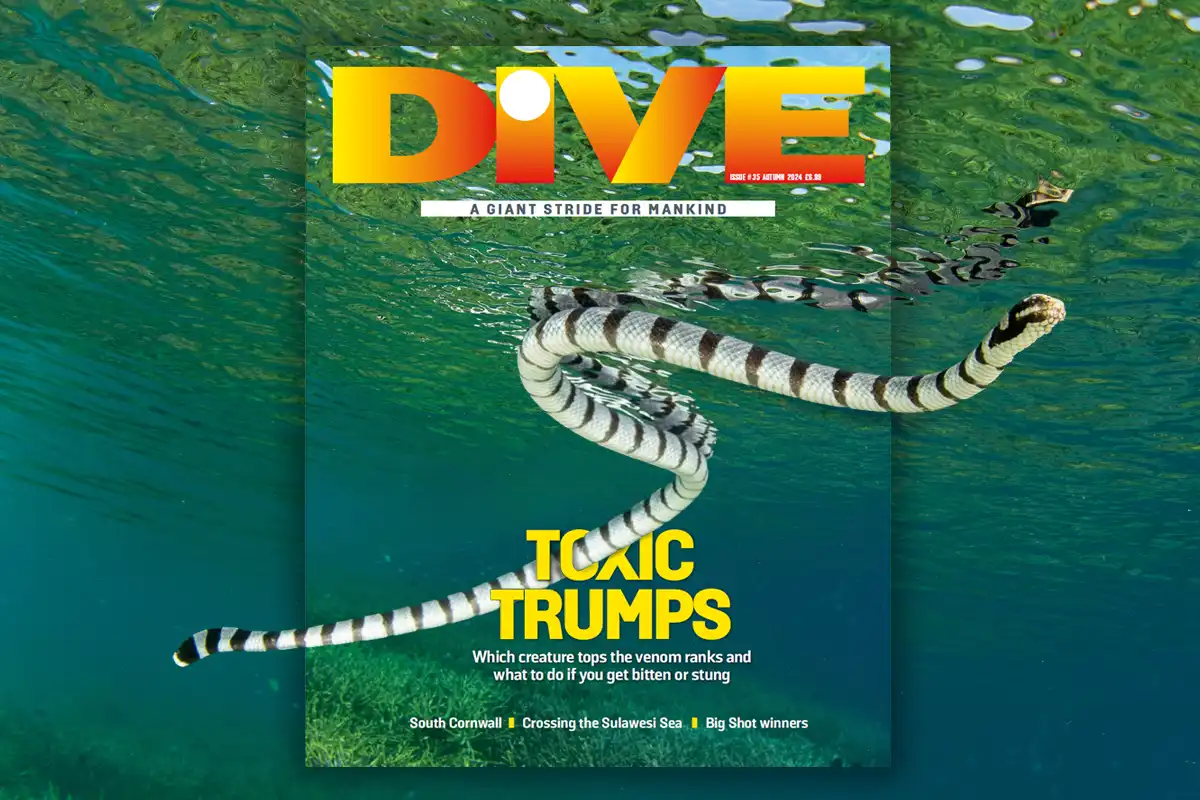
Issue # 35: A giant stride for mankind…
DIVE’s Autumn ’24 magazine is packed full of great reads – from the tip of Cornwall to the faraway reefs of Derawan, and the most venomous creatures you will find in between. Take advantage of our £1 for 3 months trial subscription* to get your copy now!
*£1 for 3 months print and digital subscription (normally priced at £22.99 in the UK) including all content and 100+ digital back issues. Renews at regular yearly subscription price after 3 months – no obligation; cancellable any time. Available worldwide (international shipping extra).


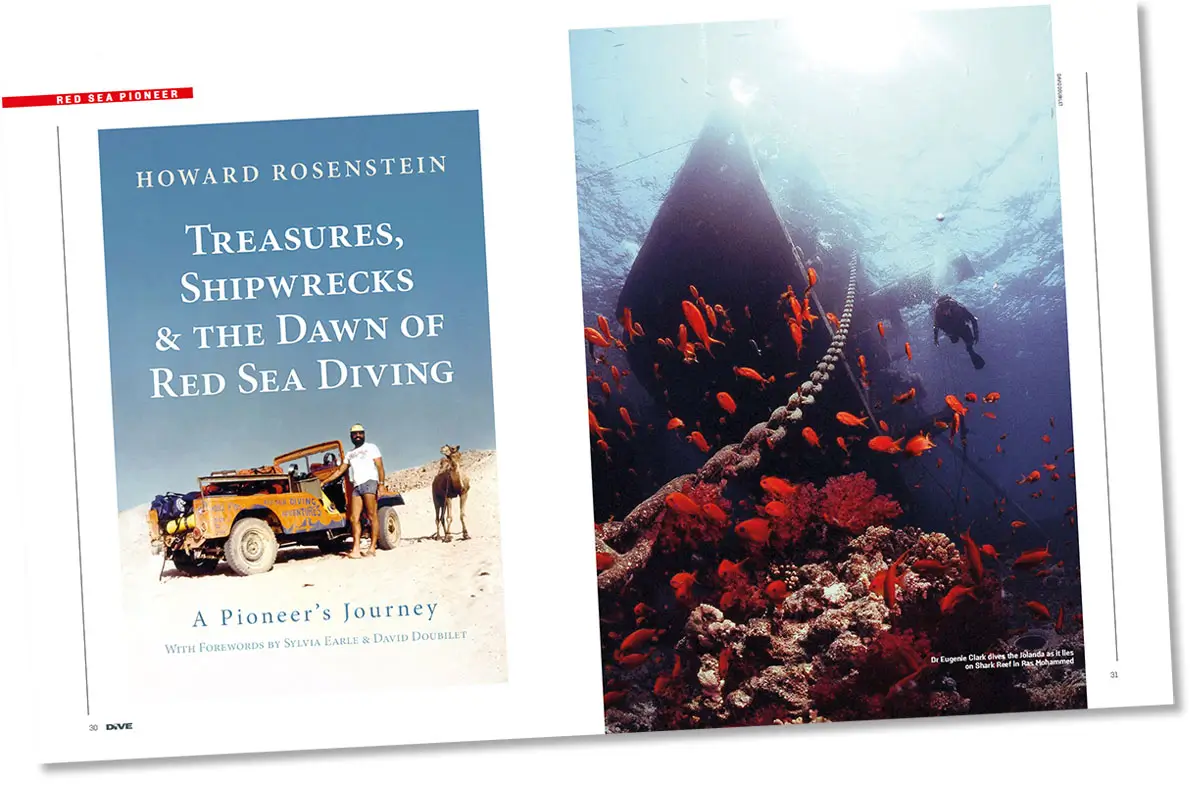
In the beginning, there was Howard Rosenstein, a young American student who travelled to Israel for a summer break and gave snorkelling a try. Within just a few years he had built the first dive base in Sharm El Sheikh and kickstarted an industry that now represents a significant percentage of Egypt’s GDP. In this extract from his book, Treasures, Shipwrecks and the Dawn of Red Sea Diving, Rosenstein recounts how the wreck of a ship named Jolanda took its place as one of the most important shipwrecks in the Middle East.
Read: Shark and Jolanda Reef – Howard Rosenstein on the day it all began…


Far across the Sulawesi Sea is a small group of islands that have – so far – managed to escape the ravages of mankind’s destructive impulses and remain as pristine as the famous reefs of Raja Ampat. Mark B Hatter took an Aggressor Adventures liveaboard to the Derawan Islands, and fills us in on the spectacular underwater world he found.
Read: Scuba diving Derawan – the other side of the Sulawesi Sea

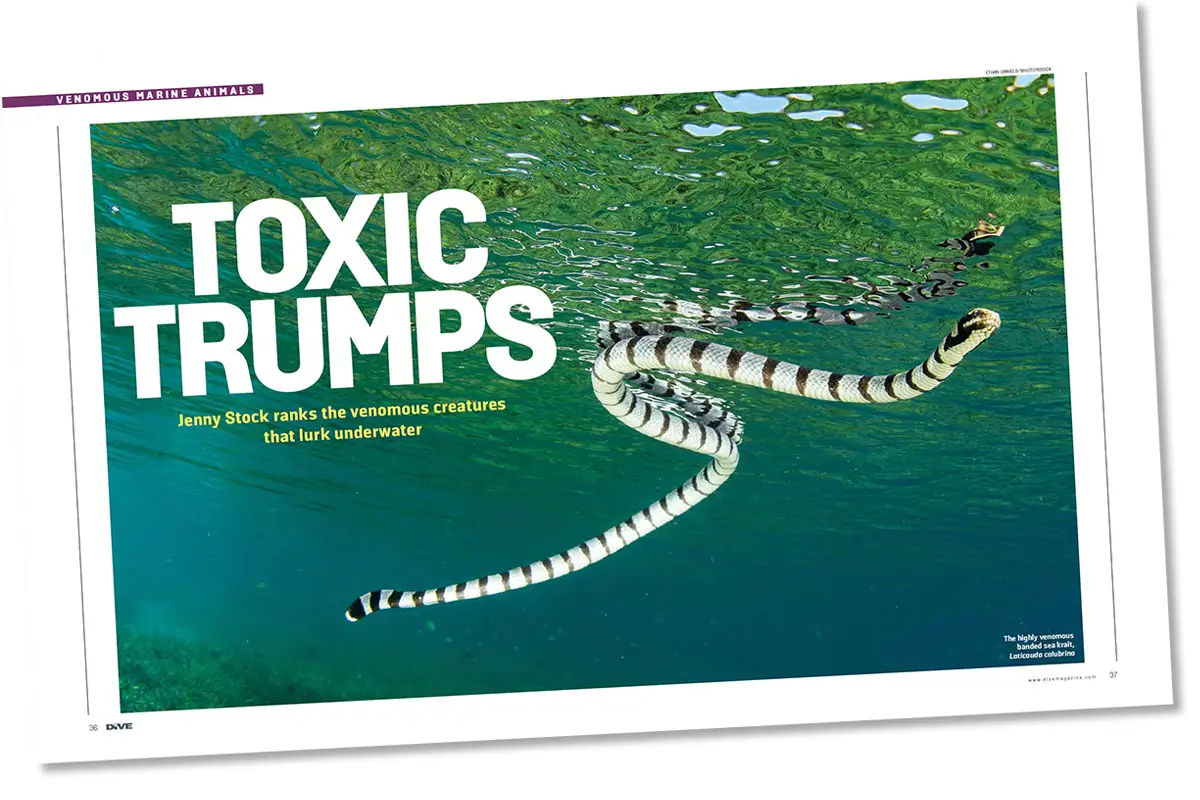
If you eat it and you die, it’s poison; if it eats you and you die, it’s venom. Now we’ve got that sorted, diver, underwater photographer and BBC camerawoman Jenny Stock takes us through her version of the ‘Top Trumps’ of her childhood, with an in-depth guide to the most venomous creatures in our oceans, what will happen if you get stung by one and – if you survive – what treatment you’re going to require.
Read: ‘Toxic Trumps’ – venomous sea creatures and how to treat their stings

Click here to take out a regular yearly subscription

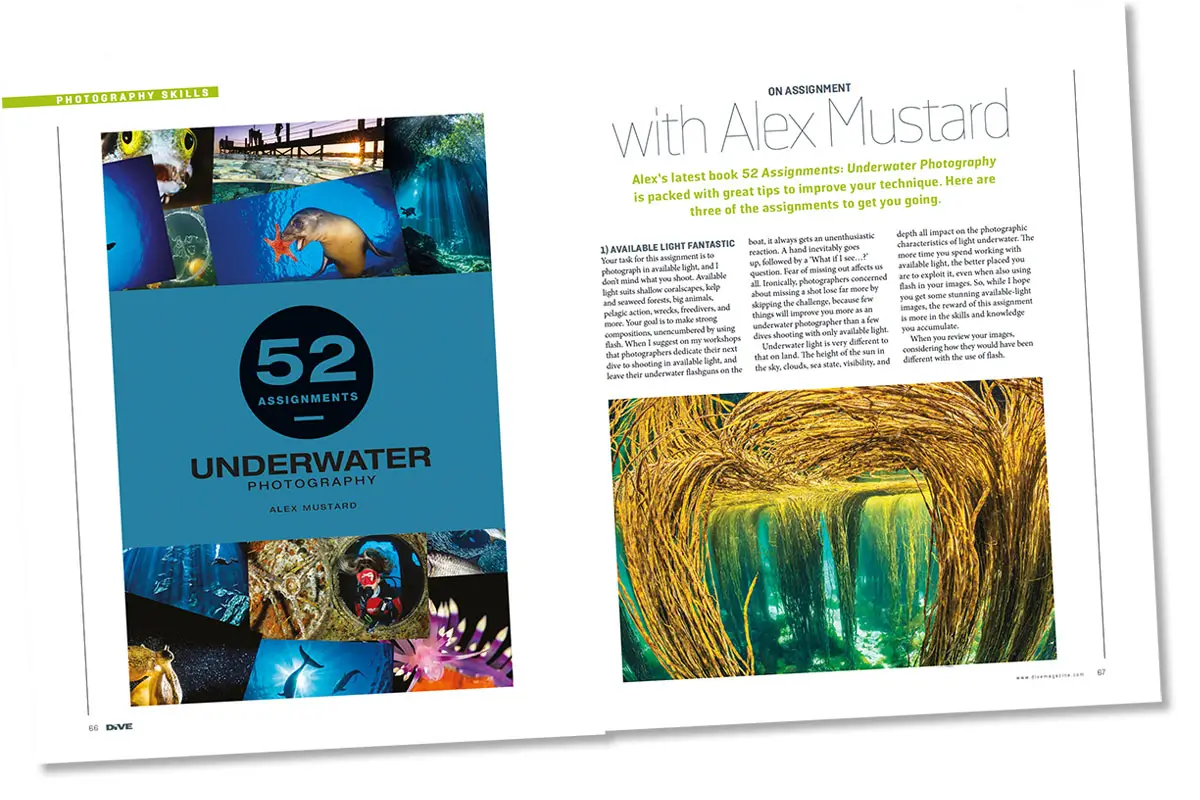
Dr Alex Mustard is one of the best-known underwater photographers in the world, and in his latest book 52 Assignments in Underwater Photography, he provides a collection of exercises designed to flex the photographic muscle and get your brain working around how to use light, angles and composition to create the best underwater images. DIVE got hold of three of Dr Mustard’s exercises to share and get you thinking…
Read: 52 Assignments: Underwater Photography with Alex Mustard


DIVE’s latest Big Shot underwater photography competition called for entrants to send us the Best and Brightest pictures they’ve ever taken – and the winners were so dazzling our judges had to don their shades to pick the winners! Check out the best submissions in all their glory as they were meant to be seen, on the glossy art-quality stock of our print magazine.
Read: DIVE’s Big Shot Bright and Beautiful – THE WINNERS!

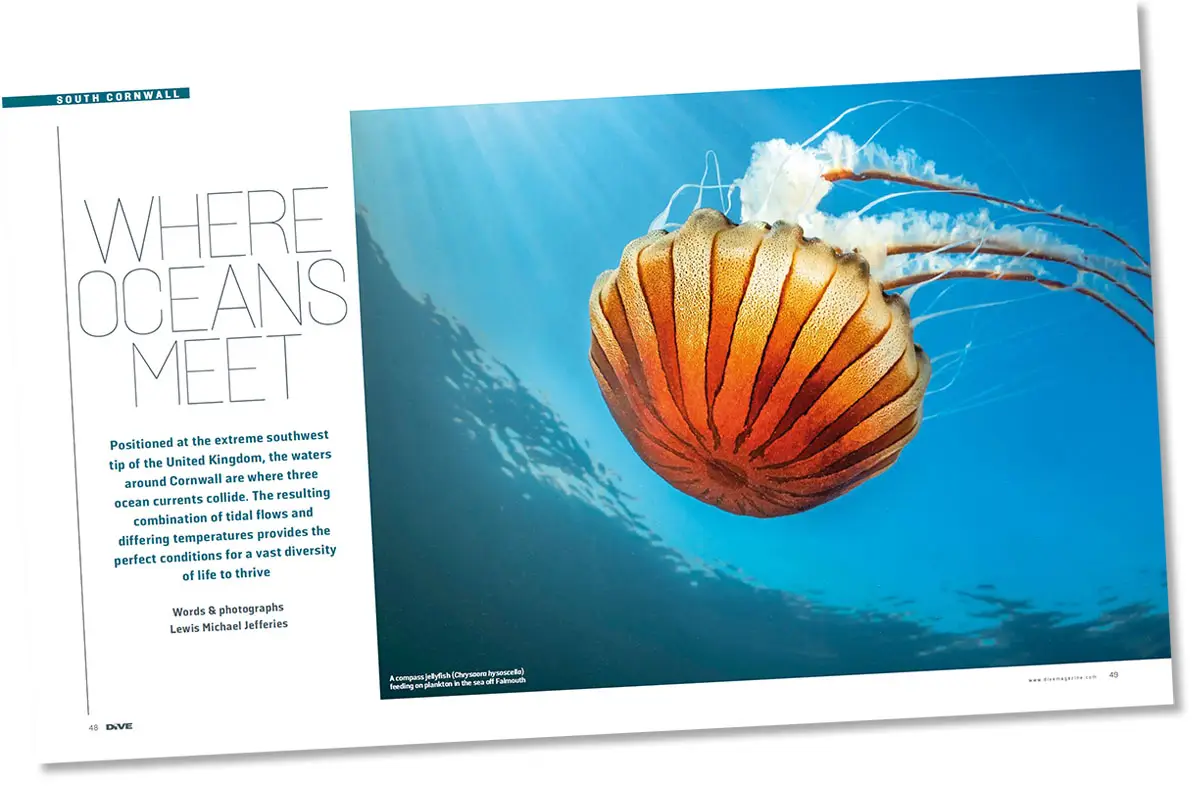
Three major ocean currents meet at the southwestern tip of the UK, where the combination of tides and currents creates the perfect conditions for a huge amount of biodiversity to thrive. Lewis Jefferies visits the most distant part of Cornwall to explore the Lizard Peninsula and its treacherous Manacles to enjoy the rich beauty of some of the UK’s best diving.
Read: Where Oceans Meet – the amazing biodiversity of Cornwall


Although the Isle of Thanet in Kent is part of mainland Great Britain and no longer an island, in some ways it remains apart from the rest of the country, something that resonated with photographer Rebecca Douglas, whose diagnosis with autism and ADHD in adulthood turned her attention to the wild edges of the UK’s coastline. Joanne O’Brien talks to Rebecca about her connection to the sea and latest exhibition.
Read: Wild Edges – an interview with photographer Rebecca Douglas


The South Atlantic Island of St Helena is about the same size as the Scottish City of Edinburgh, but holds a large share of the responsibility for the management of a Marine Protected Area twice the size of Great Britain. Mark ‘Crowley’ Russell reports on how the Saints are tasked with looking after one of the most important MPAs on the planet.
Read: An Island of Hope – St Helena’s extensive MPA


The concept of working for free training is not new, and internships can be an excellent way to earn your stripes as a dive professional – but it has been soundly abused by unscrupulous businesses looking to cut labour costs. Former instructor Mark ‘Crowley’ Russell reports on why PADI’s decision to formalise the concept may have beneficial implications for the industry as a whole.
Read: Are work-for-training scuba diving internships worth it?
More DIVE Magazine previews:
- DIVE Magazine Summer 2024 – exploring the depths
- DIVE Magazine Spring 2024 – the Magazine with Bite
- DIVE Magazine Winter 2023/24 – Expect the Unexpected
- DIVE Magazine Summer 2023 – To the Limits
- DIVE Magazine Spring 2023 – Thinking Big



